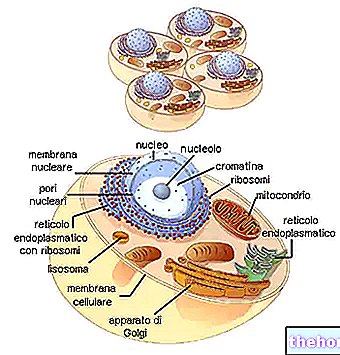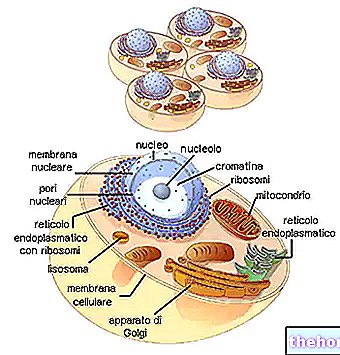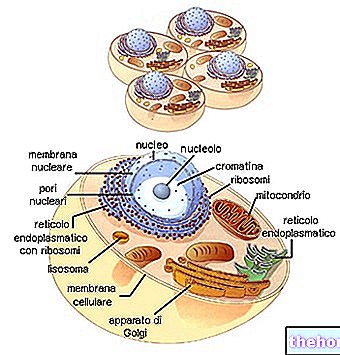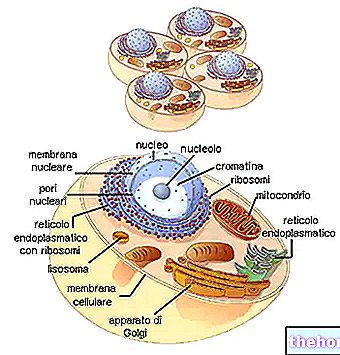The plant cell has some peculiarities that allow it to be distinguished from the animal cell; these include highly specific structures, such as the cell wall, vacuoles and plastids.

Cell wall
The cell wall constitutes the outer covering of the cell and represents a sort of rigid envelope essentially formed by cellulose; its particular strength protects and supports the plant cell, but the reduced permeability hinders the exchanges with other cells. This inconvenience is remedied by tiny holes, called plasmodesmi, which cross the wall and the underlying membrane, communicating their cyto poles.
In general, the walls of plant cells present a "wide variability in appearance and composition, thus responding to the functional needs of the tissue that hosts them (the cutin, for example, opposes excessive transpiration and is therefore abundant on the external surface of the parts epigee of plants that live in particularly arid environments).
Vacuoles
Very often, in the plant cell we find a large vacuole, that is a vesicle delimited by a membrane similar to the cellular one (called tonoplast), containing water and substances that the cytoplasm contains in excess (anthocyanins, flavonoids, alkaloids, tannins, essential oils, inulin, organic acids, etc. in relation to the type of cell). The vacuoles therefore act as a deposit of reserve and waste substances, and play an important role in the preservation of the osmotic balance between the cell and the external environment; small and numerous when young, they increase in size as they grow older.
Plastids and Chloroplasts
In the cytoplasm of the plant cell, in addition to the organelles characteristic of the animal (mitochondria, nucleus, endoplasmic reticulum, ribosomes, Golgi apparatus, etc.), we find organelles of varying numbers and sizes, called plastids. They contain particular pigments, that is colored substances, such as carotenoids and chlorophylls; the former have a color ranging from yellow to red, while the emerald shades of chlorophyll give many plants their typical green color.
The presence of chlorophyll in some plastids, therefore called chloroplasts, gives the plant cell the ability to perform chlorophyll photosynthesis, ie the autonomous synthesis of the organic substances it needs; for this purpose it uses the light energy of the Sun and inorganic compounds absorbed by the atmosphere (carbon dioxide) and by the ground (water and mineral salts). Overall, the series of biochemical steps that govern chlorophyll photosynthesis can be summarized in the classic reaction:
12H2O (water) + 6CO2 (carbon dioxide) → C6H12O6 (glucose) + 6O2 (oxygen) + 6H20 (water)
If the mitochondria are comparable to "power plants" to which to entrust the demolition of nutrients, the chloroplasts of the plant cell are similar to "factories" responsible for building the same substances. Mitochondria and chloroplasts represent the only cellular structures endowed with their own DNA, capable of replicating autonomously and of being transmitted from one generation to the other through female gametes.
The chloroplasts are delimited by a double membrane, the innermost portion of which folds into an elaborate system of flattened and interconnected membranes, called thylakoids, immersed in an amorphous substance, the stroma, where the enzymes of the Calvin cycle are found (dark phase of photosynthesis).
In addition to chloroplasts, in the plant cell we also find plastids rich in yellow-red pigments (called chromoplasts) and others containing reserve substances (leukoplasts, in particular amyloplasts if they are responsible for the accumulation of starch).









.jpg)


















